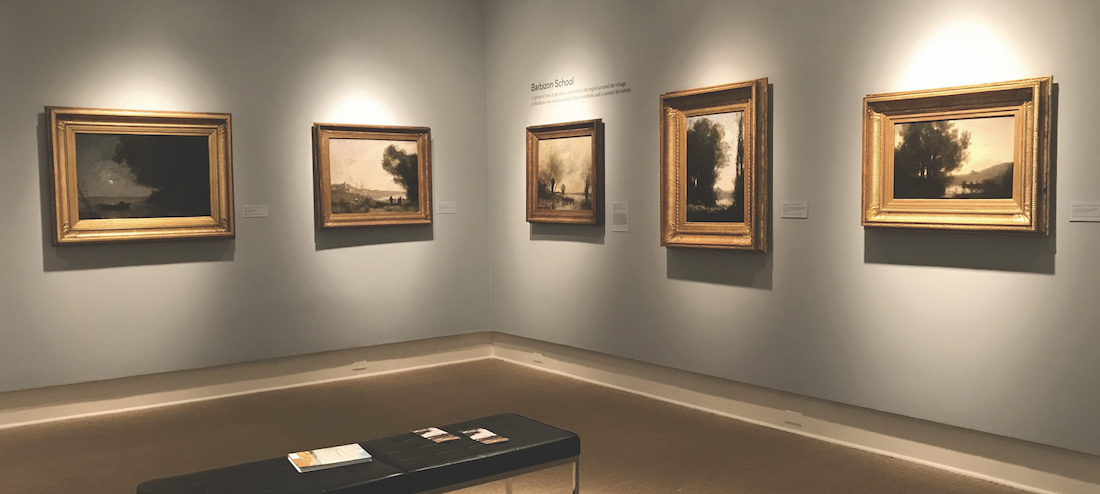Among the several new additions to the Cornell Fine Arts Museum (CFAM), Rollins students can now view one of only two exhibitions of its kind in the entire United States.
Many of us have likely seen replicas of Claude Monet’s work. Towards Impressionism, CFAM’s new landscape art exhibition, contains an original.
The exhibition displays the work of other legends such as Camille Corot, Eugène Boudin, and Theodore Rousseau, all artists who shaped the field of landscape painting.
This is the first time these paintings have ever been shipped to the Americas from the Musée des Beaux-Arts in Reims, France. Only one other museum in the U.S. contains paintings of this kind.
The exhibition tracks how landscape painting evolved from its Romantic roots through various French schools, arriving at impressionism.
“It’s all about light and color,” explained CFAM Director Dr. Ena Heller about impressionism. “Light and dark in conjunction, in dialogue… you look at [the way things are], and then you make them better.”
Dr. Heller played a large role in bringing this exhibition to CFAM. It will be available to the public until April 8.
In addition, from Picturing War to Butch Heroes to Ruptures & Remnants, this season at CFAM is sure to have something for every eye.
Ruptures & Remnants contains artwork concerning how we view and interact with ruins, remnants, fragments, and divides. The exhibition displays video art, contemporary paintings, and ancient Hindu metalwork in conjunction.
Museum curator Dr. Amy Galpin elaborated on the work of Purvis Young, who enjoys incorporating discarded or forgotten objects into his art. “It’s not uncommon to see a broom or a whole door in some of his larger works,” said Dr. Galpin.
Ruptures & Remnants also contains several paintings by French artist Jean Charlot. Charlot was active mainly in Mexico and is considered one of the founders of Mexican muralism.
Galpin also noted the work of Sadie Barnette in the exhibition.
“[Artist Sadie Barnette] creates visual compositions that engage a hybrid aesthetic of minimalism and density, using text, glitter, family Polaroids, subculture codes and found objects,” CFAM explained on its website. Barnette has been featured in The New York Times, among other notable publications.
Furthermore, CFAM has dedicated an exhibition, Devotion, to the work of non-binary artist Ria Brodell, whose work addresses gender identity, history, religion, and contemporary culture. Their work in this exhibition comes from two collections.
The Handsome & the Holy concerns Brodell’s Catholic upbringing and how it mingled with their gender identity and childhood. Several paintings feature Catholic Saints interacting with beloved childhood toys and TV characters.
Butch Heroes portrays a host of individuals from throughout history who defied the gender norms of their time. Their origins range from 1600s England to 1900s Russia.
Brodell will be speaking at CFAM on March 20 to discuss their process; the exhibition will be on view through May 13 of this year.
Last but certainly not least, Picturing War joins contemporary artwork discussing war with American propaganda from World War I and II. The exhibition portrays past and present attitudes towards the United States’ place in global conflict.
Galpin explained that World War I recruitment posters are placed alongside photographs of Vietnam War reenactments to create a conversation for visitors. Picturing War is curated by Rollins senior Margaret Milford.
The exhibitions currently in CFAM span 300 years and discuss almost as many topics, if not more. Students who visit enter a new world altogether.







Be First to Comment